Guide to Buying Freeskates
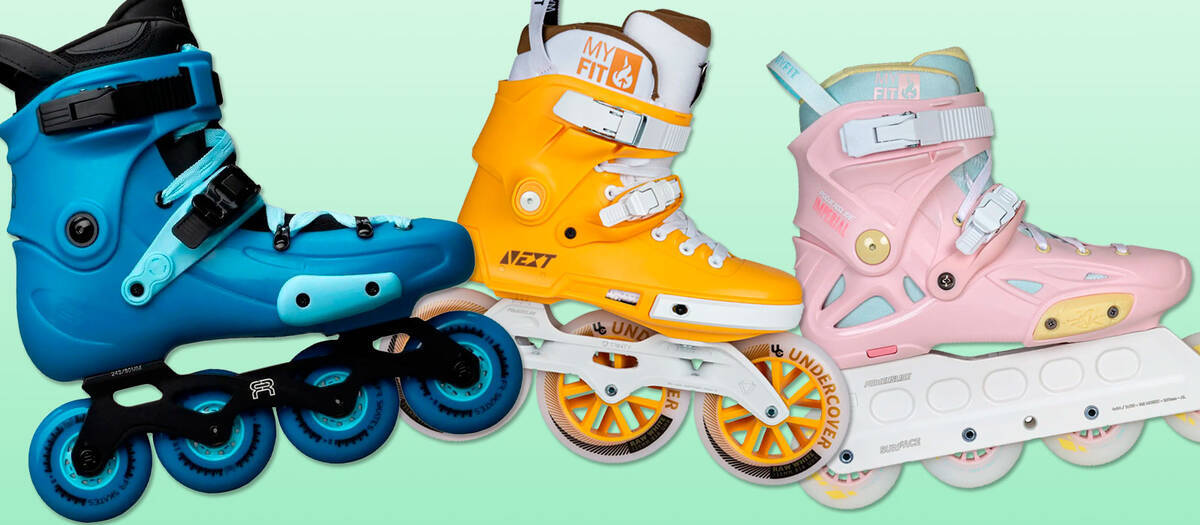
To select the ideal freeskates, it's important to find inline skates that suit your personal style and the surfaces you'll be skating on. In this guide, we'll take you through the essential elements of urban inline skating and freestyle skating, ensuring you locate the freeskates that are perfect for you and align with your ambitions.
Should you wish to explore urban inline skates or discover what attributes make freestyle slalom skates more nimble, we trust that the information provided in the sections below will answer your enquiries about freeskates.
Overview
Ideal Inline Freeskates for Beginners
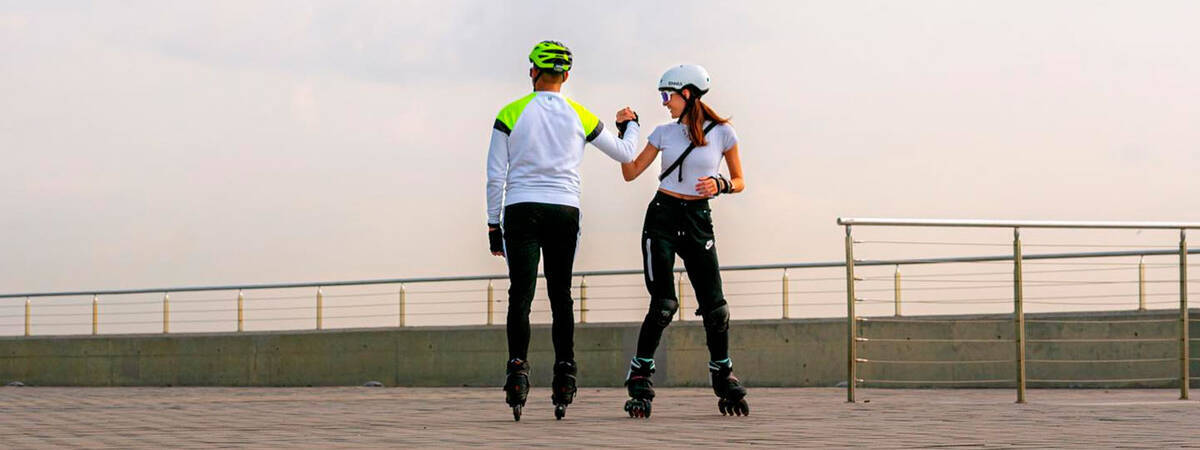
If you're just starting out with freeskating, you should consider getting a versatile pair of freeskates that allow for experimentation with different skating styles. As you advance, your preferences may become more defined by the specific style you aim to cultivate. The guidance below is intended as a general introduction for beginners intrigued by inline skating styles such as freeskating, freeriding, freestyle, and slalom.
When selecting inline freeskates, consider these characteristics:
- Comfortable liners: High-quality liners with adequate padding and ventilation are vital for prolonged skating. Seek out materials that are moisture-wicking and breathable to maintain foot comfort and coolness.
- Efficient buckle system: A dependable, adjustable buckle setup ensures a comfortable fit, optimising control and stability. An integration of buckles, laces, and straps allows for precise adjustments.
- Boots: Opt for a robust hard boot for freeskating. Hard boots are characterised by their durability, stiffness, and impact resistance; they provide excellent ankle support, enhancing your stability. Moreover, hard boots generally offer better responsiveness than soft boots.
- Ankle Support: Acquiring skates with adequate ankle support is crucial to prevent injuries and maintain proper ankle alignment while performing tricks.
- Wheel sizes: It is advisable to choose 80 or 90 mm wheels to enhance stability. Larger wheels elevate the centre of gravity, hence making the skates harder to manage.
- Wheel hardness: Softer wheels are generally preferred for beginners as they provide better grip on rough terrains and absorb surface vibrations effectively.
When perusing our collection of freeskates, keep in mind the above pointers. Furthermore, you can filter products according to skill level to view models tailored to your proficiency.
Defining Urban Skating
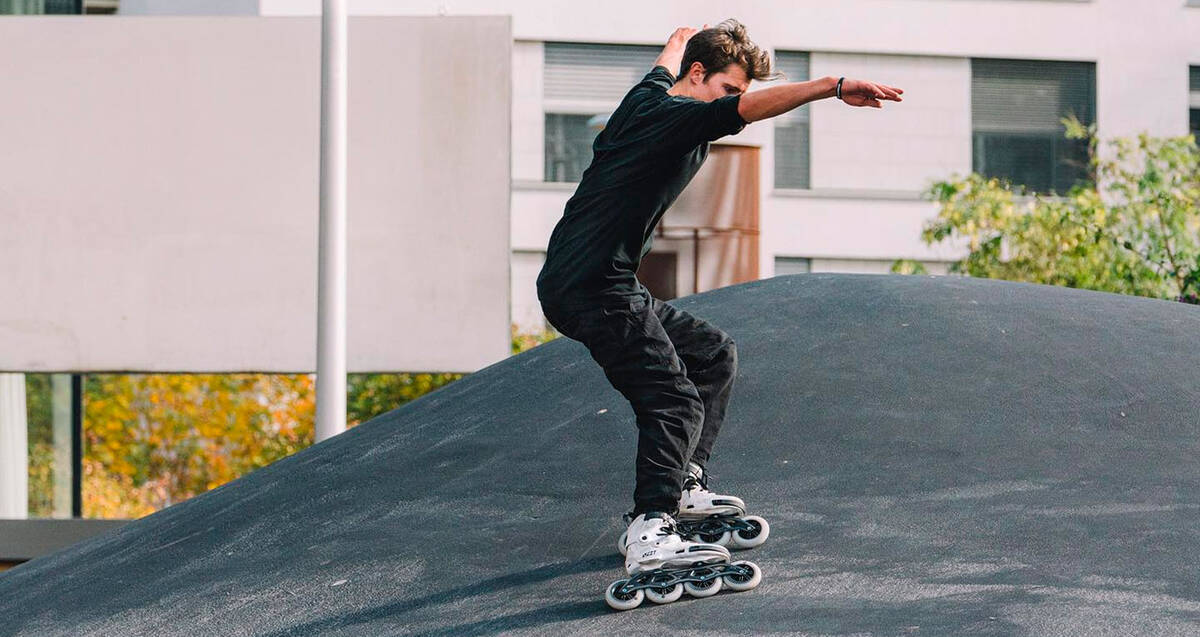
Urban skating or street skating entails traversing the cityscape with speed and flair. It involves leaps over barriers, descending staircases, and navigating the urban environment smoothly. While it shares aspects with aggressive skating, such as stair-bashing and wall-riding, it excludes grinding. Urban freeskates are designed for vigorous and dynamic skating rather than rail tricks.
What Are the Best Urban Inline Skates?
Urban skating requires a hard boot for longevity and a robust frame capable of enduring impacts. Given the extended duration of skating, comfort is paramount. Thus, seek out skates with cushioned liners for both support and comfort.
Best Wheels for Urban Skating
Urban skates are equipped with wheels suitable for speed and agility, with typical diameters ranging from 80 mm to 110 mm. For long-distance urban skating, larger wheels facilitate speed and maintain momentum, while smaller wheels offer enhanced control. During tricks, 100 mm wheels might be more comfortable than 110 mm wheels.
The hardness of urban skate wheels ranges from 82A to 88A. If skating on uneven and rough surfaces, softer wheels offer an advantage by efficiently absorbing vibrations.
Further insights into wheels for inline skating are available:
Understanding Freestyle Skating

Freestyle skating is centred on precision and technical maneuvers such as spins, jumps, and slides. It is primarily performed on flat terrain, often using lines of cones which the skater weaves through in varied patterns.
The Role of Flow in Freestyle Skating
Flow is crucial in freestyle inline skating, signifying the fluidity and control to transition between moves effortlessly. Freestyle skating often parallels figure skating, with advanced skaters seemingly gliding above the ground.
Defining Slalom Skating
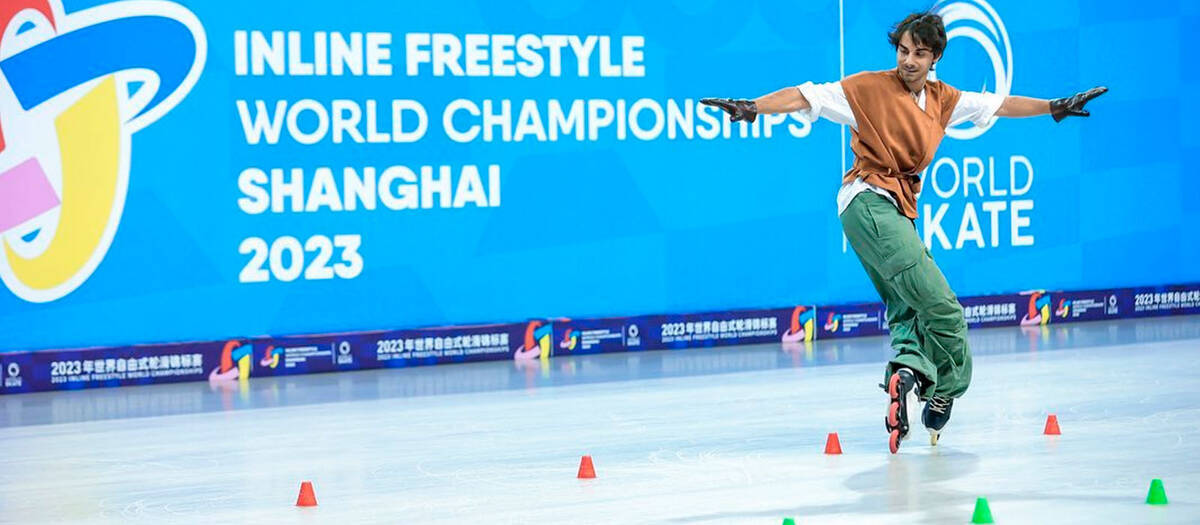
Slalom skating focuses on navigating between cones with agility and speed. It demands balance, agility, and superb footwork. Slalom skates usually feature smaller wheels and shorter frames to enhance maneuverability.
Recommended Slalom Skates
A shorter frame with smaller wheels is critical for agility in slalom skates.
Experienced slalom skaters favour a rockered wheel setup, where the middle wheels are larger than the front and rear wheels, improving maneuverability and assisting with trick execution. However, for beginners, rockered setups may be harder to manage and complicate learning basic skills.
Many freeskates can accommodate slalom skating if you're just starting. As you develop expertise, you can explore features that enhance precision and control, like a rockered wheelbase, to improve flow in slalom skating. Another key element is the liner; seasoned skaters often prefer built-in liners for greater precision and responsiveness.
Urban Skating Compared to Freestyle Skating
Though urban skating and freestyle skating share common elements, a strict partition isn't always necessary.
Urban skating focuses on tackling urban obstacles and varied environments. In pursuing urban skating, you'll likely jump, roll downstairs, or maneuver around compact spaces. It borrows components from both fitness skating and aggressive skating.
Freestyle skating prioritises elegance and precision. Visualise it as dancing on wheels with smooth, graceful movements. Freestyle skating is sometimes nearly interchangeable with slalom skating.
Whilst there is significant overlap between the two styles, urban skating is mostly about creative use of architectural features, whereas freestyle occurs on flat and smooth surfaces. In urban skating, one weaves through traffic, contrast this to freestyle skating, where one weaves between cones.
Do you lean towards the fast-paced intensity of urban skating, or are you more drawn to the artistic aspects of freestyle skating? These considerations will influence future enhancements to your freeskate setup.
Deciding Between 3-Wheeled and 4-Wheeled Freeskates
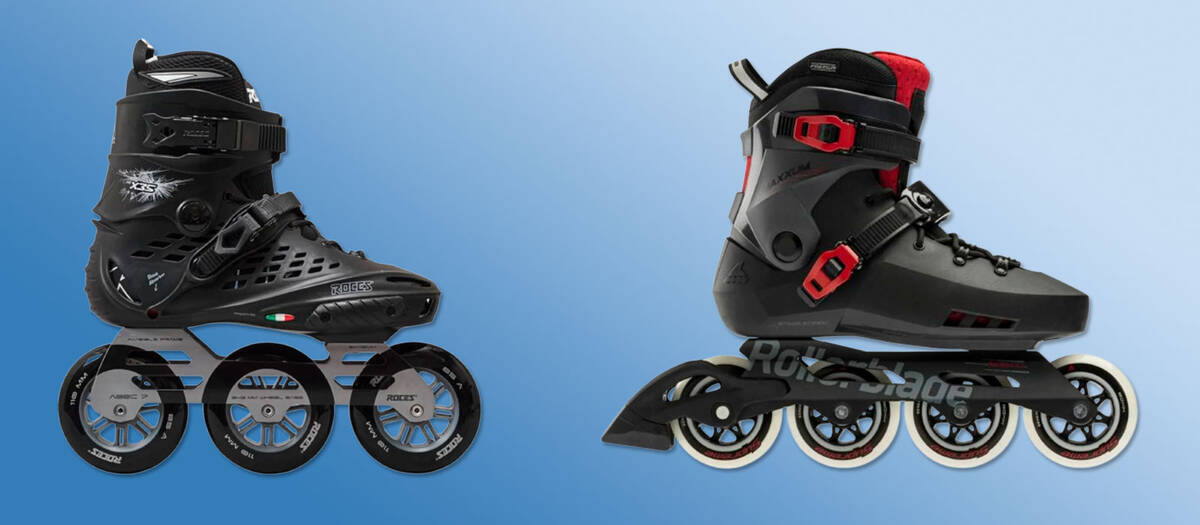
Here are essential factors to weigh when choosing between three-wheeled or four-wheeled inline skates:
- Four wheels for novices: As a novice on inline skates, the stability offered by four-wheeled skates makes them the better choice.
- Triskate benefits: For more adept skaters, three-wheeled skates offer remarkable benefits. Their shorter wheelbase elevates maneuverability, facilitating tighter turns and easier trick execution. They support larger wheels, ideal for those targeting distance coverage.
- Wheel size: Triskates accommodate larger wheels without extending the skate length, which boosts speed while retaining agility—ideal for seasoned skaters aiming to expand their skillset.
The decision between 3-wheeled or 4-wheeled skates is a matter of individual style and preference rather than a definitive right or wrong choice.
Freeskating: Is a Rockered Wheel Setup Desirable?
An experienced freestyle skater may benefit significantly from a rockered wheel setup. This configuration features smaller front and back wheels compared to the middle ones, creating a curved wheelbase that enhances agility.
However, for novices, a rockered setup may seem unstable and harder to control, complicating the learning of basic techniques. Initially, a flat wheel setup provides stability and ease of use, allowing confidence-building before transitioning to a rockered configuration.
Upon examining the frame types of various models, you may find some skates described as 'rockerable.' This allows for positioning the front and back wheels higher to boost agility. A rockered setup can also be achieved by rotating wheels so that the outer ones wear at a faster rate than the centre wheels.
Maintaining Your Freeskates
To ensure your freeskates deliver peak performance, keep these considerations in mind. After extended use, wheel positions should be swapped within the frames and flipped, allowing them to wear evenly on both sides. Most skaters develop personal preferences and routines for wheel rotation, but if you're unsure where to start, consult our guide.
Additionally, we offer guides on cleaning and lubricating bearings and overall inline skate maintenance, including washing tips and how to prevent odorous liners.
Freeskate Size Selection
To ensure a comfortable freeskating session, apply these sizing recommendations:
- Refer to size guide: Ensure a perfect fit by checking the size guide found on each product page.
- Match shoe size: Choose a size close to your usual shoe size for optimal comfort.
- Choose a snug fit: A tighter, snug fit offers better control and stability during skating.
The Vital Role of Skate Protection
We urge the use of certified protective gear for optimal safety and durability. At SkatePro, our protective equipment complies with EN 1078 standards and has endured rigorous testing by seasoned skaters. Not only does wearing premium protection keep you safe, but it also enhances your confidence to learn new techniques and master skills more quickly, as you'll feel secure when exploring your limits.
